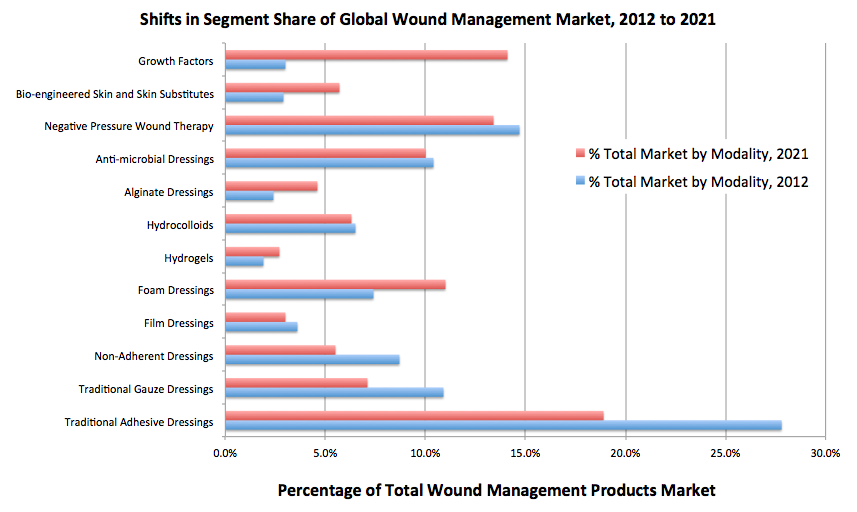Wound management is a field and an industry in a constant state of flux. With so many different technologies involved in addressing wounds, from the chronic to the acute, with technologies from the very well established to the cutting-edge new, the balance of product utilization (and manufacturer revenues) is a constantly moving target.
Wound management is a field and an industry in a constant state of flux. With so many different technologies involved in addressing wounds, from the chronic to the acute, with technologies from the very well established to the cutting-edge new, the balance of product utilization (and manufacturer revenues) is a constantly moving target.
Traditional wound dressings — simple gauze or other inert bandages — represent a huge existing market by virtue of their broad clinical utility and well established presence in the market (literally, centuries), while novel technologies like growth factors, which have just begun to demonstrate their potential to accelerate healing and/or solve the vexing problem of chronic wounds, have not really begun to penetrate clinical practice and generate substantial caseloads, yet. Between the extremes is a continuous range of products across the spectrum from the established to the novel.
Below is illustrated the 2012 to 2021 shift in the balance of the global wound management products market for the specific product types. The aggregate market is growing over this period at a respectable +7% CAGR, but that aggregate rate belies the individual segment rates ranging from a low of under 2% to a high of over 27%. That makes these share values all the more intriguing.
Source: MedMarket Diligence, LLC; Report #S249.








